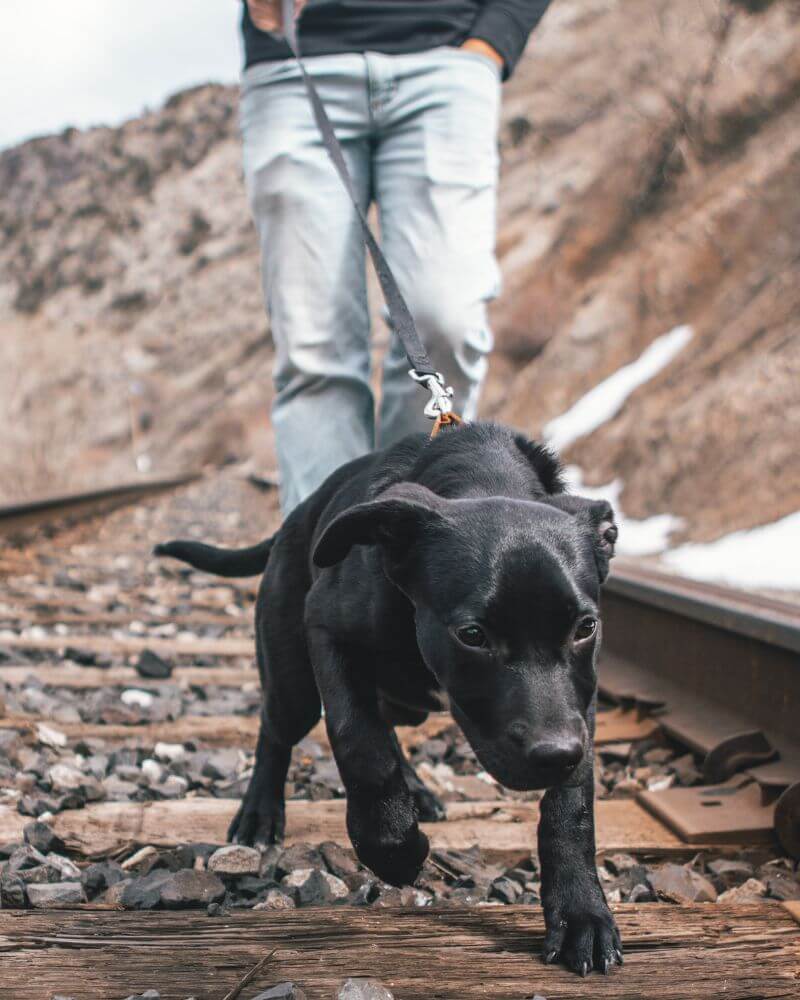How to Use a Shock Collar Safely & Effectively with a Small Dogs
Find out how to safely and effectively use a shock collar on your small dog with this comprehensive guide. Shock collars, also known as e-collars or remote training collars, are popular tools for dog trainers and owners. They can be used to correct a variety of unwanted behaviors, such as barking, digging, or running away.
However, using a shock collar safely and effectively is important, especially when working with small dogs. This guide will introduce using a shock collar with a tiny dog, including information on choosing the right collar and how to use it for training. It will also provide tips on avoiding common mistakes and using positive reinforcement alongside the collar for best results.
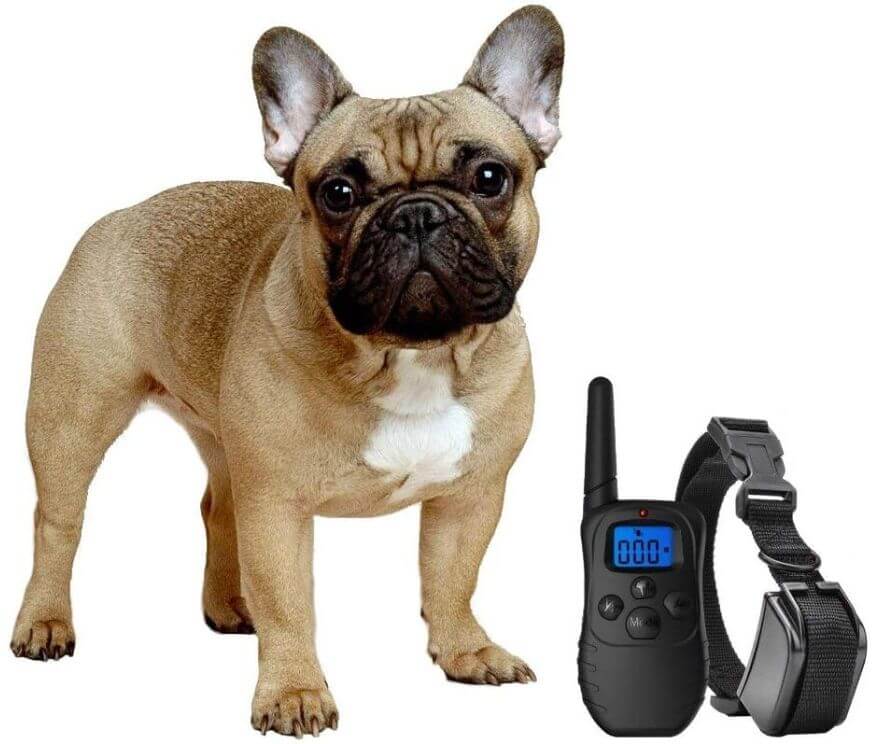
How Does Shock Collar for Small Dog Work?
A shock collar for a small dog works by delivering a small electric current to the dog's neck through contact points on the collar. The electric current is controlled by a remote or a button on the collar and is used as a form of punishment or negative reinforcement to discourage certain behaviors.
When the dog does something unwanted, the owner can press the button on the remote or the collar, delivering a mild electric shock to the dog. The dog will associate the shock with the unwanted behavior and will be less likely to repeat it in the future.
It's important to note that these collars are not recommended as the only form of training; they should be used as a last resort and in conjunction with positive reinforcement and rewards-based training. Additionally, it's crucial to have proper knowledge of the collar's usage and the dog's behavior and to use it only under professional supervision.

Does The Shock Collar Cause Pain & Stress
Shock collars, sometimes referred to as remote dog training collars, have been a subject of controversy in terms of their impact on dogs, especially small breeds. Various studies and sources suggest that these training tools can indeed cause pain and stress in dogs, impacting their overall wellbeing and behavior. Particularly for a little dog, the shock setting can be intense, leading to discomfort and fear. This can interfere with the dog's attention during training sessions, potentially leading to undesirable behavior.
While some models of shock collars offer multiple levels of intensity and vibrations settings as a less harsh alternative, it's important to consider how a small dog responds to such stimuli. Even at lower levels, the shock can still cause distress. Plus, negative experiences can lead to increased aggression and fear-based behaviors.
Advanced features like water resistance, a security lock, or a range of distances for remote control might be among the best things about these devices from a practical standpoint. However, the potential emotional and psychological impact on your little dog should be a primary concern.
It's crucial to explore other positive reinforcement training methods that can effectively correct behavior without causing any harm or distress to your pet. Always consult with a professional trainer or a vet to determine the most appropriate training method for your dog.
What the Professionals & Vets Think
The use of shock collars on small dogs has sparked widespread debate among veterinarians and professional dog trainers. Many professionals are opposed to their use, citing concerns about animal welfare and the efficacy of these devices. Most veterinarians do not recommend shock collars for dog training. This view is also echoed by several veterinarians, and they typically recommend other training tools such as treats or head halters. The SPCA argues that shock collars do not help dogs understand desired behaviors and labels them as inhumane. Moreover, a study published on Frontiers found that training with positive reinforcement was more effective than training with remote electronic collars. However, like any controversial topic, there are differing opinions. Some believe that when used correctly, remote dog training collars can serve as an effective training tool. However, the consensus leans towards using positive reinforcement methods over shock collars.
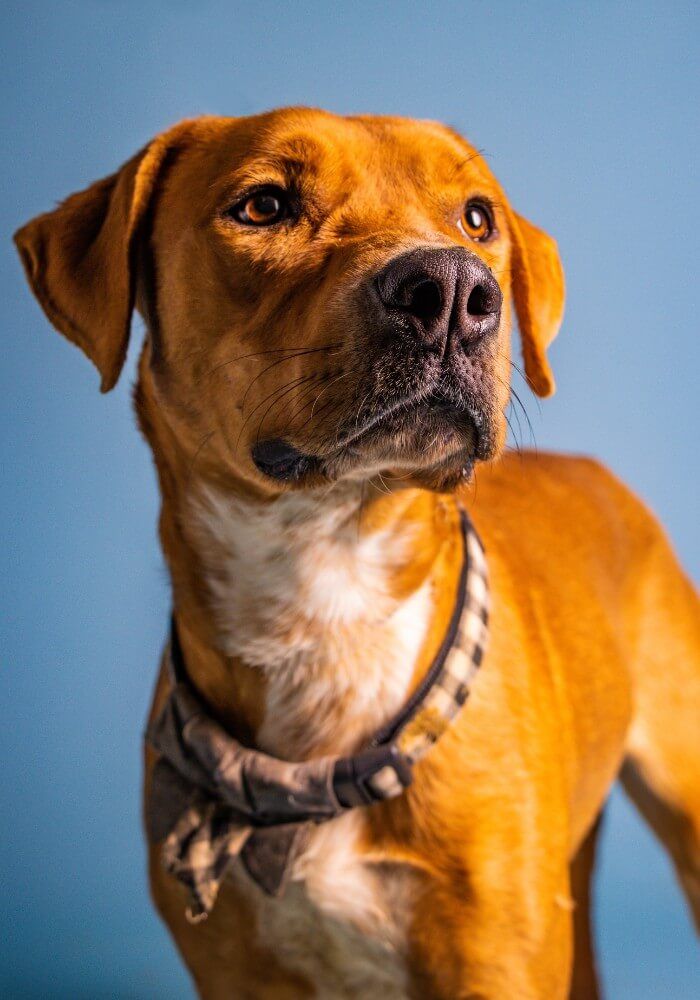
Collar Size & Fit
When it comes to fitting a shock collar on smaller dogs, it's crucial to ensure the correct size and fit. The dog training collar should be snug enough to maintain contact with the skin but not so tight that it restricts breathing or causes discomfort. Generally, you should be able to fit one or two fingers between the collar and your dog's neck. Some collars come with multiple levels of adjustability, allowing you to find the perfect fit for your dog.
In addition to the fit, consider the features of the dog collar. For example, some models offer tone options as an alternative to the shock feature, which can be less stressful for your pet. A fast charger can also be beneficial, ensuring that the collar is always ready for use. Moreover, a fully waterproof collar can provide peace of mind when you're training your dog outdoors or if your dog likes to swim.
For households with more than one dog, look for systems that allow you to add additional collars. This allows you to train multiple dogs with the same remote, making the process more convenient. Remember, the key is to ensure the collar is comfortable for your dog while still allowing you to effectively communicate and reinforce training commands.
Alternative Methods
There are numerous alternative training methods that can be used instead of a shock collar, also known as an e-collar or remote dog training collar. Positive reinforcement is one such method, where dogs are rewarded for exhibiting desirable behavior, thereby encouraging them to repeat it in the future. This could involve treats, toys, praise, or anything else that the dog finds rewarding.
Clicker training is another effective technique, which involves using a clicker to signal to the dog that they have performed the desired behavior, followed by a reward. This method can be especially useful for teaching complex behaviors and tricks.
Distraction can also be a useful tool, particularly for addressing issues like barking. Instead of using bark collars, try to distract the dog when they start barking unnecessarily, redirecting their attention to something more productive.
There are also advanced remote trainers available that offer a range of static stimulation and vibration settings, allowing you to communicate with your dog without causing any physical discomfort.
Remember, every dog is unique and may respond differently to various training methods. It's important to experiment with different techniques and find the one that works best for both you and your pet.
How We Choose
Choosing the best small dog shock collar can be difficult, particularly with so much choice on the market. Fortunately, we've done all the hard work for you! We've read countless customer reviews and done extensive research to bring you reliable advice and the most comprehensive product reviews. From product specs to customer comments, we make sure to cover every angle before deciding which collars make it onto our list. So, when it comes to finding the perfect collar for your pup, you can trust us to provide only the very best information.
PetSpy N20 Dog Training Shock Collar for Small Dogs
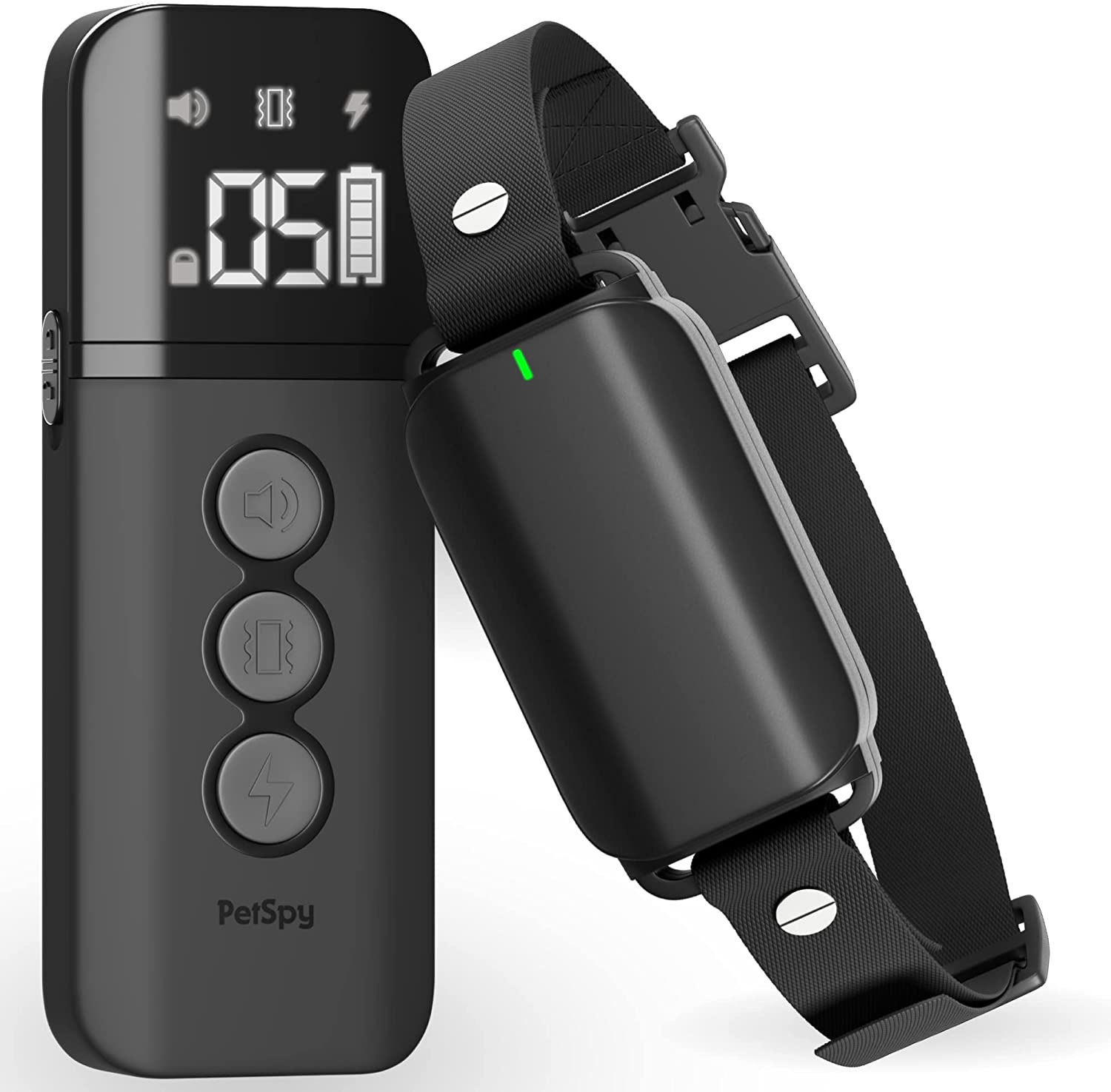
PetSpy N20 Dog Training Shock Collar for Small Dogs
What You Need to Know
💠Great battery life
💠Vibration strength
💠Water resistance
💠Value for money
Why We Love It
Introducing the PetSpy N20, the latest version of e-collars. This collar is sleek, lightweight, and up-to-date in design, making it perfect for small dog breeds that weigh over 5 lbs and are 6 months or older. The PetSpy dog e-collar has a remote control range of up to 1640 ft. It features a safety lock button and a design that eliminates accidental usage. The collar also comes with silicone caps on the contact points to avoid irritation, and the remote has a built-in timeout of 10 seconds.
Ergonomically designed and weighing only 1.7 grams, this device is IPX7-Certified Waterproof and comes with a carabiner, allowing you to take it wherever you go. The remote has a user-friendly button layout, allowing you to operate without looking away from your dog. With its modern design and lightweight 3 oz, this collar is suitable for dogs of all sizes. The PetSpy dog training collar has three modes: electric shock, vibration, and beep. It offers 16 levels of shock and vibration, providing the flexibility to choose the appropriate level for your dog's training.
Enrivik - Small Size Dog Training Collar with Remote
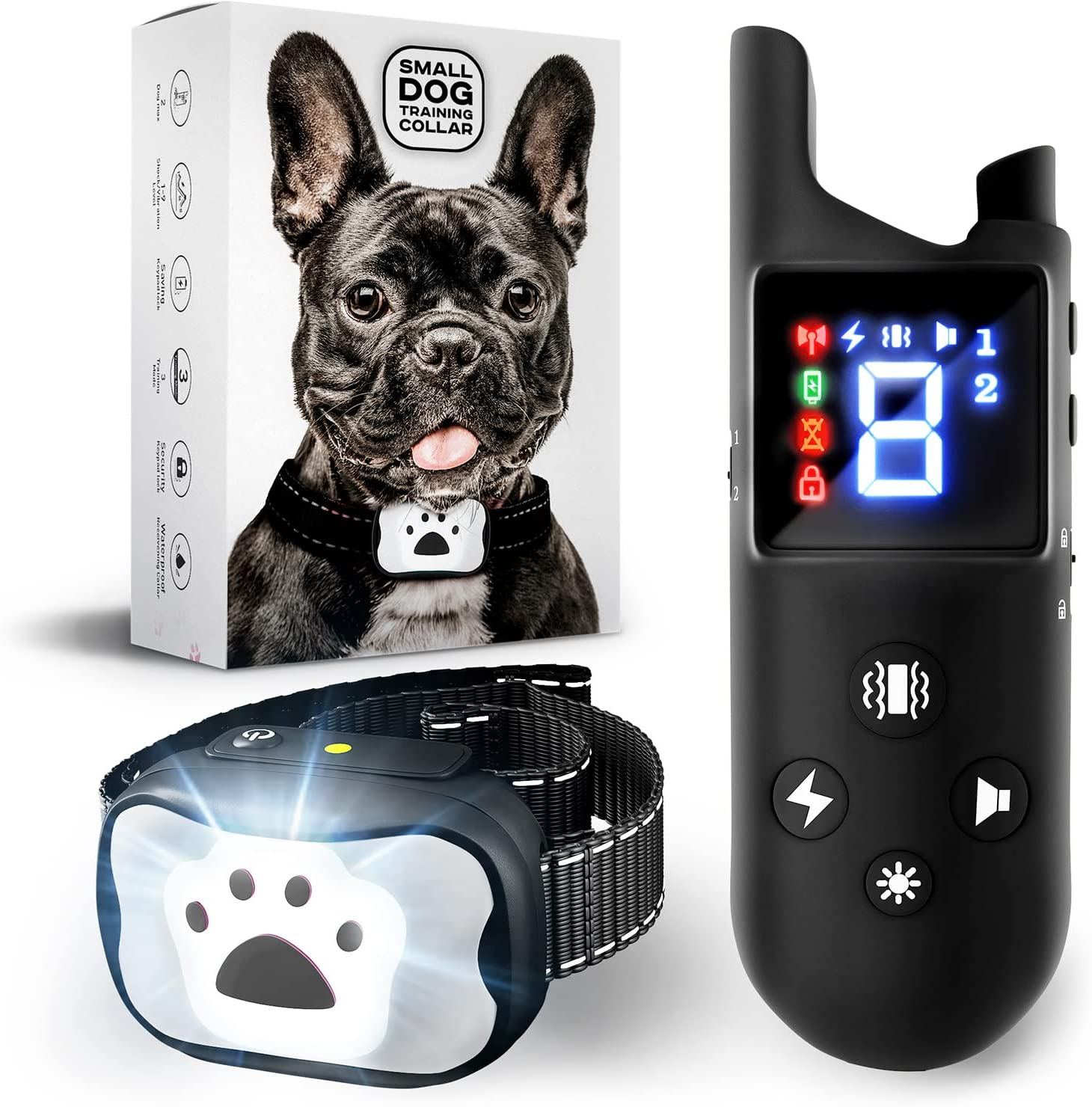
Enrivik - Small Size Dog Training Collar with Remote for Small Dogs
What You Need to Know
💠Lock feature
💠Sleep mode
💠Battery life
💠Vibration strength
Why We Love It
Designed specifically for small dogs, this is one of the smallest e-collar available in the market, making it easy to use and highly effective in correcting unwanted behaviors. Unlike other larger training collars, this minimalistic design allows for easy training, regardless of the size of your dog.
This small dog shock collar has a modern and stylish design, featuring a white LED front panel that keeps the collar looking sleek. Unlike other training collars for small dogs, this collar's minimalistic design ensures that it will not detract from your dog's appearance. This shock collar for dogs is ready for any weather; it is 100% weatherproof, allowing for use in all conditions, including rain, mud, and snow.
eXuby - Tiny Shock Collar for Small Dogs - Smallest Collar on The Market
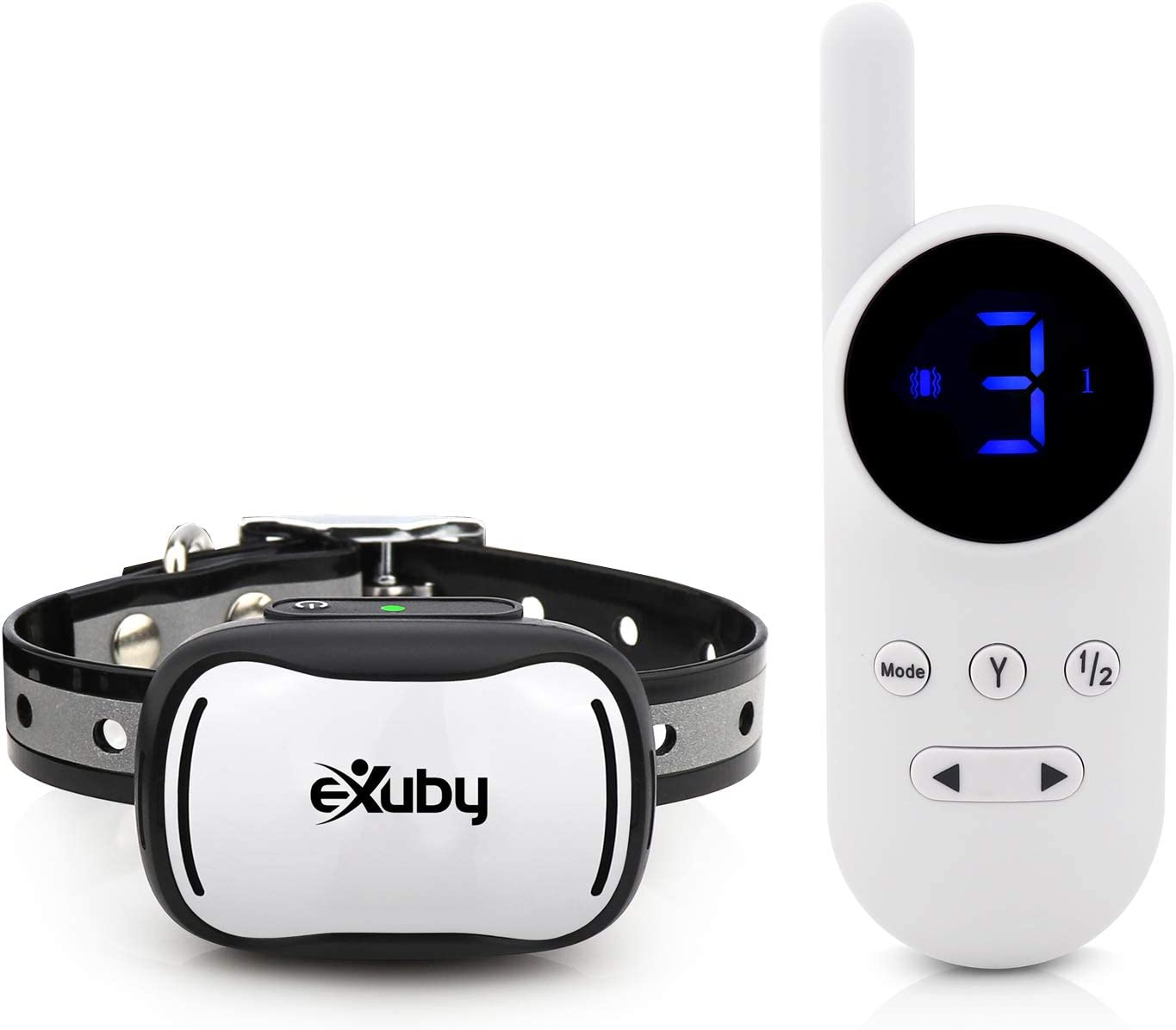
eXuby | Tiny Shock Collar for Small Dogs | Smallest Collar on The Market
What You Need to Know
💠Easy to use
💠Comfortable
💠Durable
💠Small 5-15lbs
Why We Love It
The eXuby Tiny Shock Collar is an easy solution for controlling small dog behaviors such as barking, chewing, and mischief. It features a built-in rechargeable battery with a fast charger, making it convenient and cost-effective. Additionally, it is water-resistant and durable, allowing for use in various weather conditions. This tiny shock collar serves its functional purpose and has a stylish design, with blue and pink interchangeable plates for customization. The remote control is also bright and attractive, adding to the aesthetic appeal and blending seamlessly with your home decor.
This collar offers different training modes, including shock, vibration, and sound, with the ability to switch between nine intensity levels to find the appropriate setting for your dog. The alternative modes of vibration and sound can be more suitable for some dogs than the shock mode.
MAISOIE Dog Training Collar, IPX7 Waterproof Dog Shock Collar with Remote Range 1300ft, 3 Training Modes
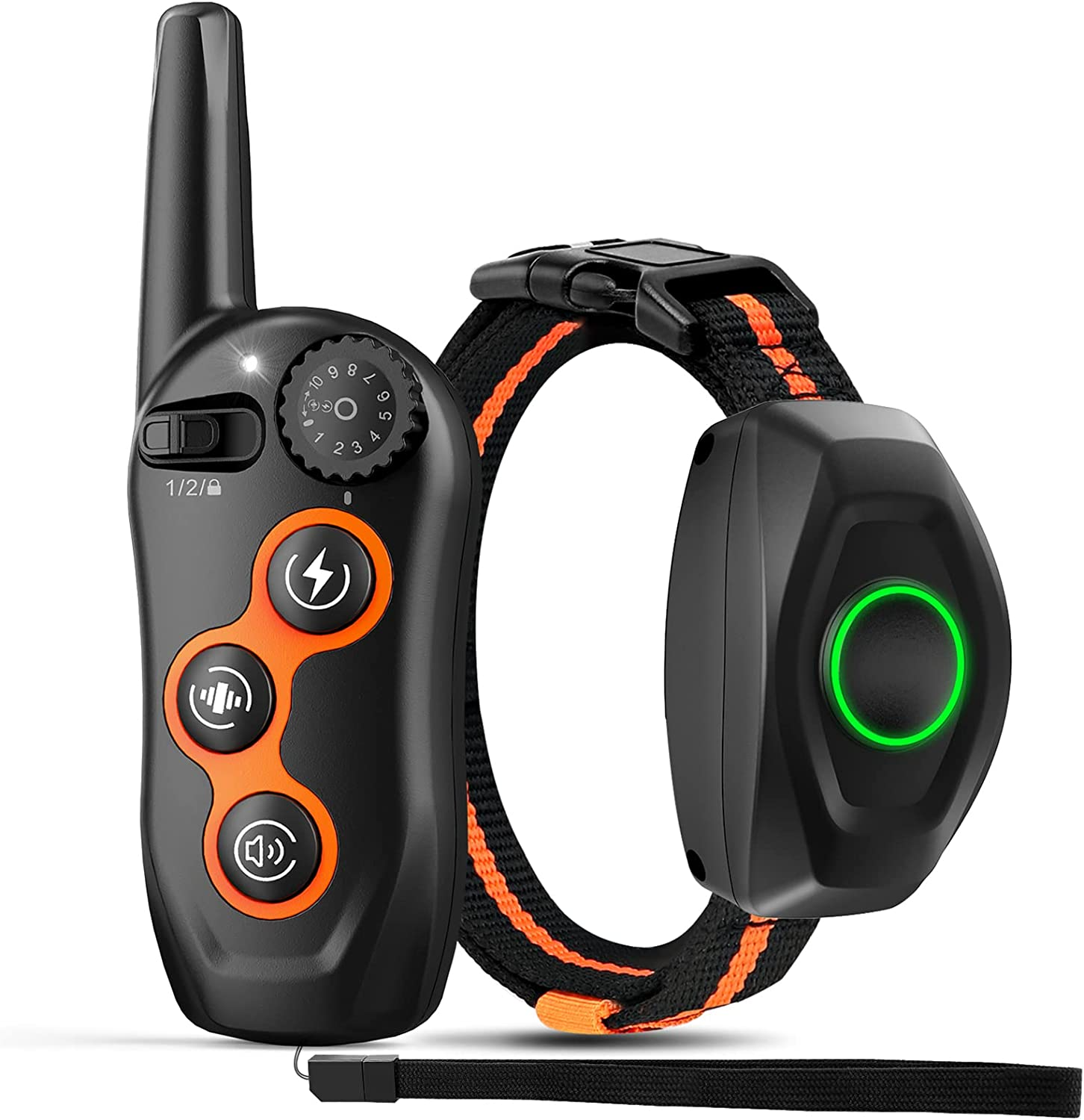
MAISOIE | Small Dogs | Training Collar | Waterproof Dog Shock Collar
What You Need to Know
💠Remote Control
💠Easy to use
💠Better battery life
💠Durable
💠Rechargeable battery
Why We Love It
This dog training collar offers 3 modes of training: beep, vibration (with 1-10 intensity levels), and shock (with 1-10 intensity levels) to help you teach your dog obedience and correct unwanted behaviors such as barking, chewing, biting, chasing, jumping, digging, etc. With the option to choose from 0-10 levels of shock and vibration, the collar allows you to select the appropriate intensity level based on your dog's temperament.
This dog shock collar comes with a remote range of up to 1300ft, allowing for easy training of your dog in various locations such as the backyard, park, beach, or elsewhere. The remote and the receiver are rechargeable, taking 2-3 hours to fully charge. The receiver can last approximately 10 days of continuous use and 10-15 days in standby mode, while the remote can last for about 40 days of continuous use and 90 days in standby mode. The collar can accommodate a wide range of dog sizes, the strap can be adjusted from 9" to 26", and it fits dogs weighing 15-100 Ibs. The collar's waterproof design means you don't have to take it off when your dog is swimming, showering, or playing in the rain.
Bousnic Dog Shock Collar for 2 Dogs - ( 8-120lbs) Waterproof Rechargeable Electric Dog Training Collar with Remote
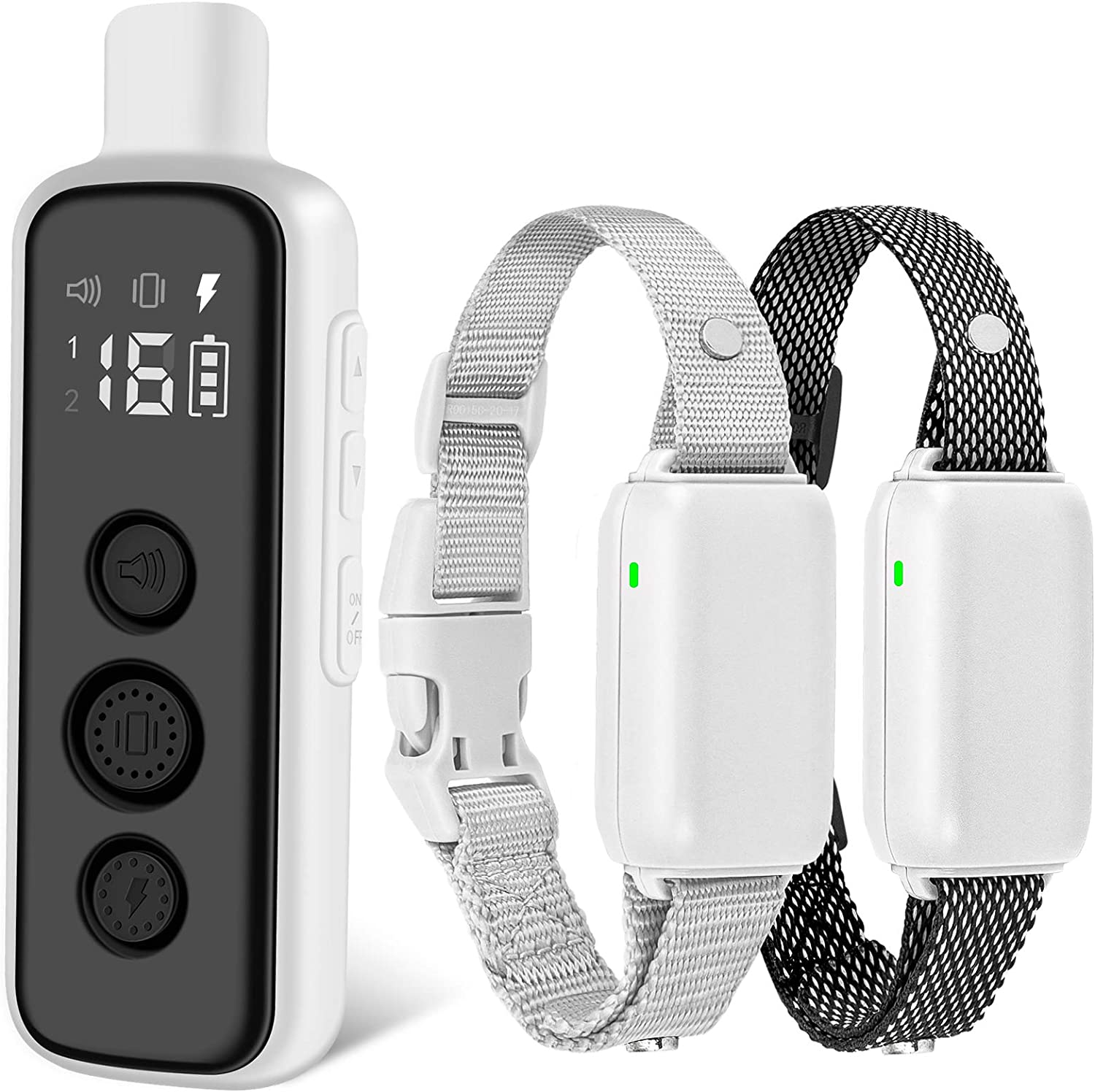
Bousnic | Small Dogs | Shock Collar for 2 Dogs | Waterproof & Rechargeable
What You Need to Know
💠Easy to use
💠Remote Control
💠Waterproof
💠Comfortable
💠Suitable for all sizes of dogs
Why We Love It
The Bousnic remote control has a dual-channel function that allows you to train two dogs at the same time. With a remote training range of up to 1000FT, this collar offers great flexibility for training your dog in various locations such as the backyard, park, beach, or anywhere else.
The Bousnic e-collar receiver is designed to be sleek, small, and lightweight, making it comfortable for dogs of all sizes. Measuring 2.3 inches in length, 1.4 inches in width, and 1 inch in height, the collar weighs only 0.12 lbs. The adjustable nylon collar fits neck sizes between 6-27 inches, making it suitable for small, medium, and large dogs that weigh between 8 lbs and 120 lbs. The remote control is ergonomically designed and has a silicone coating for easy handling and operation. The Bousnic electronic collar is rechargeable, featuring a built-in lithium battery; it can be charged using a phone adapter, making it very convenient. Additionally, the collar receiver is IPX7 waterproof, providing flexibility and ease of use during outdoor activities.
Tips & Techniques on Training Your Small Dog with a Shock Collar
It is important to note that using shock collars for dog training can be controversial and may cause harm if not used properly. The American Veterinary Society of Animal Behavior (AVSAB) does not recommend the use of shock collars for training.
If you decide to use a shock collar, it is crucial to use positive reinforcement techniques in conjunction with the collar, such as rewarding your dog with treats or praise for good behavior. Additionally, start with the lowest shock level and gradually increase it as needed. It is also important to never use the collar in a punishment-based manner, such as shocking your dog for misbehavior without first teaching them the desired behavior.
Note that shock collars should never be used on dogs with certain medical conditions or puppies under the age of six months. The use of shock collars has been a controversial topic and it is recommended to consult with a professional dog trainer before using one.
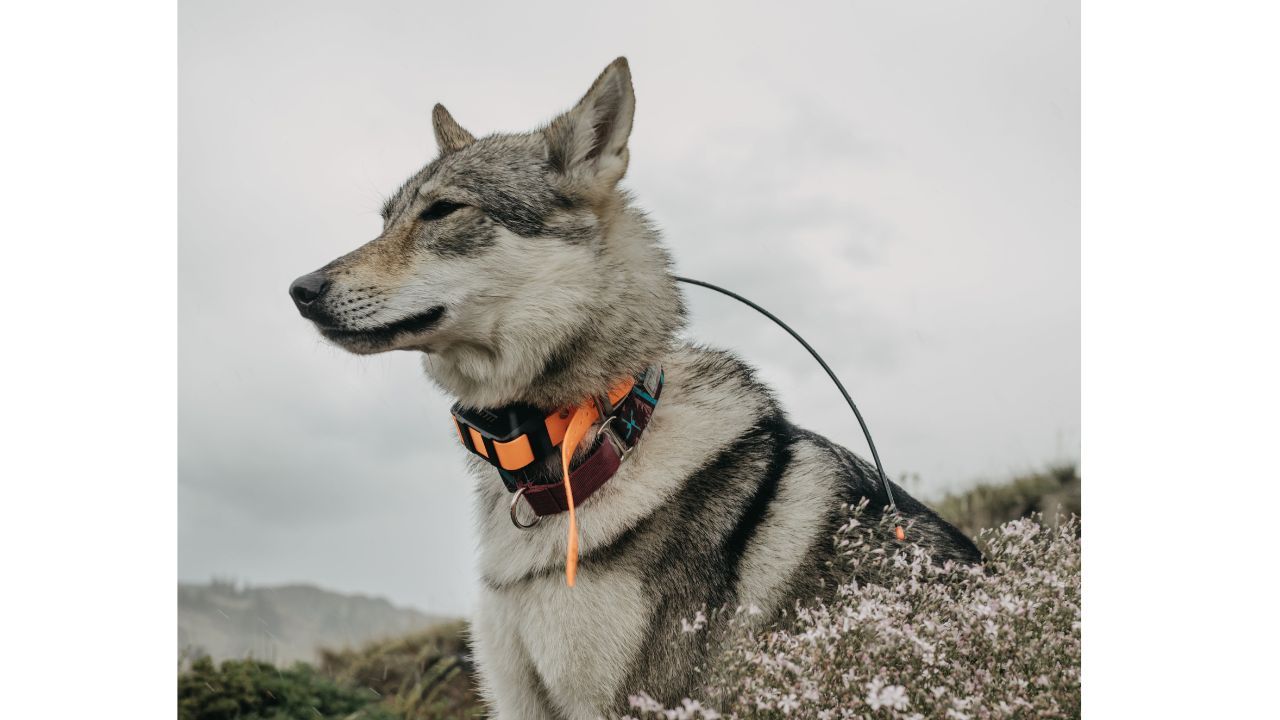
Shock Collar FAQs
Are shock collars for small dogs safe?
Shock collars for small dogs should only be used after consultation with a vet or certified dog trainer and under the strict guidance of a professional. Moreover, dog training collars should not be used on puppies younger than six months old. When used correctly, these collars can help train dogs who are out of control by providing mild electric impulses that indicate when a command has been received and obeyed.
Do Vets recommend shock collars for small dogs?
Generally speaking, vets do not recommend the use of shock collars for small dogs as there are far more humane methods like positive reinforcement training that can be used to safely train a pet without using force or pain. Positive reinforcement training focuses on rewarding desirable behavior rather than punishing bad behavior and has been shown to produce better results in most cases.
What age should you start using a shock collar for dogs?
The age recommendation for using a shock collar is typically six months and older, depending upon the size and breed of the dog in question. Whatever age you decide to start using the collar at, it's important to always consult with a certified dog trainer first before applying one to your pet.
What is the difference between an e-collar & shock collar?
E-collars offer an alternative form of collar that emits mild electrical impulses instead of sharp jolts from traditional shock collars when commands are received and obeyed correctly. Generally, E-collars are seen as more humane than traditional shock collars due to its lower voltage output and longer lasting effect on pets when compared to its counterpart.
Is it painful to use a dog training collar on small dogs?
It is possible for dog training collars to cause pain if they are used incorrectly or at too high of a level, so it's important to err on the side of caution when selecting one for your pet. Always consult with an experienced dog trainer before selecting any type of collar for your pup's safety and wellbeing.
What is an alternative to using a shock collar on dogs?
Alternatives such as positive reinforcement training, clicker training and food rewards are all excellent ways to safely train small dogs without relying on negative reinforcement or force based methods like shock collars if discomfort persists after usage guidelines have been followed properly despite consultation with an experienced trainer first.
What is a remote dog training collar?
A remote dog training collar, also known as an e-collar or shock collar, is a device used for training dogs to respond to certain commands and curb undesirable behaviors. The collar consists of two main parts: a receiver attached to the dog's collar and a remote control transmitter that the trainer or owner holds. When the trainer presses a button on the transmitter, it sends a signal to the receiver, which then administers a form of stimulation to the dog. This stimulation can come in various forms such as a mild electric shock, vibration, sound, or light, depending on the model of the collar. The aim is to get the dog's attention and associate certain behaviors with the stimulation, thereby teaching them to either repeat or avoid those behaviors. However, the use of these collars is controversial due to concerns about animal welfare, and many experts recommend using positive reinforcement training methods instead.
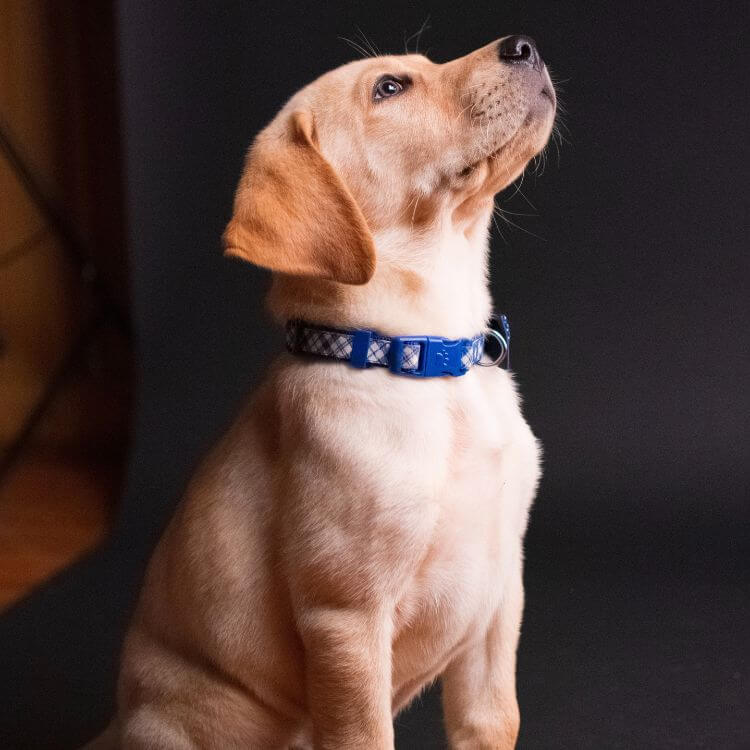
Choose The Best Shock Collar For You & Your Small Pooch?
When it comes to small dog shock collars, there's no one-size-fits-all solution. Finding the right collar depends on several factors such as size, weight, price point, and desired features. After reading countless customer reviews and considering all aspects of the top products, we've come to the conclusion that with careful consideration and due diligence you can find the perfect dog training collar for your pup. We have gone through this process to curate our collection of five amazing collars so that you can make the best decision for your pet with ease!
Thanks for Reading-
Omwen
Related Reads:
